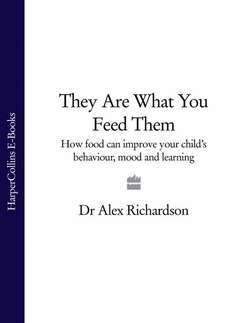Читать книгу They Are What You Feed Them: How Food Can Improve Your Child’s Behaviour, Mood and Learning - Dr Richardson Alex - Страница 76
Vitamin E
ОглавлениеVitamin E has powerful antioxidant properties. It particularly helps to protect important fats that your brain and body need.
Vitamin E is actually a whole family of substances (different tocopherols and tocotrienols) which act as ‘antioxidants’—discussed later in this chapter. Vitamin E helps to protect fats and fat-like substances from going rancid. It’s needed by all our cells, but particularly those in the brain, nervous system and vital organs, because these are rich in essential omega-3 and omega-6 fatty acids, which are easily destroyed by ‘oxidation’. Deficiencies of vitamin E and these fatty acids usually go hand in hand—and can contribute to some movement and coordination disorders.10 Vitamin E deficiency may also result in fragility of the red blood cells which carry oxygen around your body.
More superficially, you may have seen vitamin E added to skin care products—aimed at helping keep your skin looking and feeling younger, or minimizing scar tissue. It’s probably more effective to provide it from the inside, via a healthy diet that provides many other skin-nourishing nutrients! And you need to know that unless you have enough vitamin C with it, vitamin E won’t work—and could even have the opposite effect. Basically, a whole range of different antioxidants work together—so you need them together, in the way they are usually provided by many natural foods. Vitamin E is found in wheatgerm, whole grains, seeds and nuts (including nut butters), unrefined vegetable oils and some fruits and vegetables. (Commercially produced bread without whole grains contains virtually no vitamin E, as milling destroys it. The same goes for refined oils—and Chapter 8 will give you more good reasons to avoid these.)
